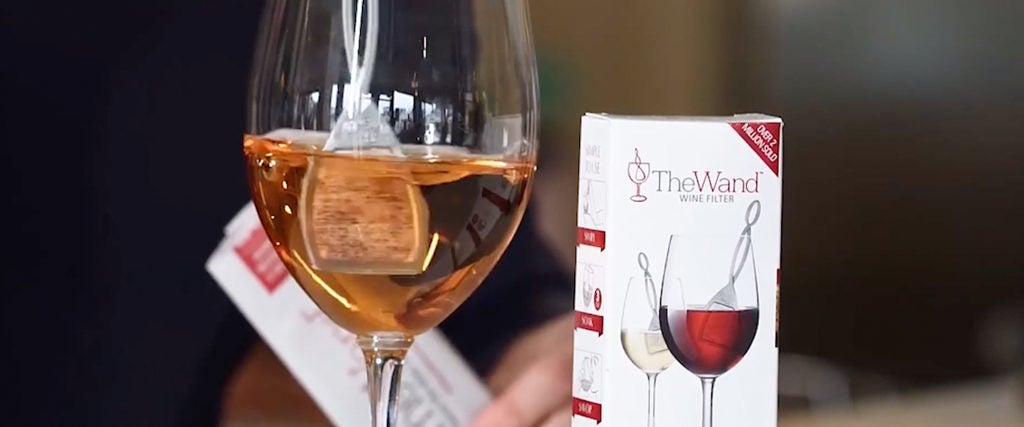There’s gotta be a special occasion for me to be spending more than $5 on a bottle of wine. I’m 24, thrifty and I like to drink. So, I tend to drink shitty wines — that is, ones that likely contain extra additives and flavors than their more expensive counterparts.
It seems, though, that headaches, aggressive fatigue and next-day malaise can come along with any wine, regardless of quality. According to a 2017 Smithsonian article on the democratizing advancements in wine that have made prices comparable to that of bottled water, there are few differences between low and high-end wines that would be measurable to the average consumer. The only exception, however, is the presence of sulfites, often identified as the culprit behind all of wines’ negative side effects. So, what if I could just filter it out?
PureWine is intended to allow wine-drinkers to do just that. Basically a swizzle stick with a tea bag-like filter attached to it, PureWine allegedly filters out the sulfites that may lead to headaches. Sulfites are sometimes a natural byproduct of wine fermentation, but are often also added by winemakers as a preservative. It’s one of the few ingredients required by the FDA to be included on the wine bottle. Usually, only organic (read, more expensive) wines lack sulfites. That said, there’s little conclusive evidence linking sulfites to headaches. Many wines do, however, contain histamines that can trigger allergies. PureWine is said to filter that out, too.
I tried PureWine on two nights this week, with a bottle of $3.99 Sauvignon Blanc I picked up over the weekend at Grocery Outlet Bargain Market. PureWine comes in two forms, the individual-use swizzle sticks called “wands” and a bottle attachment, each containing resin beads as filters. I used the swizzle sticks. The instructions state to place the wand in your glass of wine, swirl it around for a moment, and then let it sit for at least three minutes. You can safely leave the wand in the glass while you consume it, but you’re only supposed to use one wand per glass.
Unfortunately, I’m the type of person to reuse single-use contact lenses for three days, so naturally, I used one wand for two glasses of wine. Despite shirking the instructions, the wand worked: I awaited the feeling of having calipers pressed between my temples, and it did not come.
The next day, I felt just swell. After my day of work, I decided to finish off the bottle with two more glasses. This time, I broke out a new wand, swirled and let it sit for about 10 minutes. Afterwards, I threw the wand away and drank up. Again, I felt fine. But then I got cocky, and decided to drink the remaining glass without the wand as a sort of control sample. Later that evening, the calipers returned.
The tricky thing about alcohol, headaches and hangovers is that it all tends to be unpredictable. I’m never quite sure how a drink is going to make me feel in the hours that follow. So it’s hard to say for certain whether PureWine prevented my headache or whether it just wasn’t in the cards the first day, but the fact that a headache appeared the following day after a glass of the same wine makes me think that PureWine does indeed work.
My only real qualm with PureWine is the price. At $10 for a four-pack or bottle attachment, that can easily add an extra $2.50 to the cost of each glass of wine. Of course, they become more affordable as you buy in bulk. If you’re someone who experiences clear-cut, predictable side effects to wine, like congestion or a flushed face, $2.50 isn’t a bad price to pay to prevent that. For me, a complete cheapskate, that $2.50 is enough to make me question whether I really want to use it or not.
But maybe as I continue to use the rest of the PureWine I currently have, I’ll realize that $2.50 is worth it — especially if it allows me to continue buying $3 wines.

